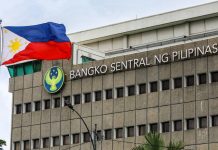
THERE’S a chance that the Bangko Sentral ng Pilipinas (BSP) will begin cutting its policy rates in June this year as demand-side price pressures start to show a convincing downtrend, Metrobank Research said.
Metrobank, in an emailed commentary, said it forecasts another above-target inflation this year at 4.3 percent, albeit softer than the 6 percent average recorded in 2023.
While it expects the 2024 average to breach the BSP’s 2 to 4 percent target range, Metrobank said the central bank may begin cutting rates in the middle of the year as core inflation, which excludes volatile food and energy items, continues to decelerate.“We think that dissipating price pressures in other nonvolatile commodity prices as indicated by the move lower in core inflation (from 4.7 percent in November to 4.4 percent in December), will make the case for the BSP to consider lowering rates as early as June,” Metrobank said.
“We think that policy rates may not need to be as restrictive as current levels throughout the year, especially if core inflation continues to move lower,” it added.
Metrobank is the latest group to pencil in rate cuts this year. Earlier, Citi said that it expects the BSP to make gradual rate cuts from the third quarter of this year amid declining inflation. Still, despite inflation cooling down to a 22-month low of 3.9 percent in December, the BSP said it deems it necessary to “keep monetary policy settings sufficiently tight until a sustained downtrend in inflation becomes evident.”
This, as the BSP missed its target for the second straight year in 2023 while rice price inflation accelerated for the second consecutive month in December to 19.6 percent, the fastest since March 2009.That said, the central bank believes that “the balance of risks to the inflation outlook continues to lean significantly toward the upside.”
“Key upside risks are associated with potential pressures from higher transport charges, increased electricity rates, higher oil prices, and higher food prices due to strong El Niño conditions,” the BSP said.
At a forum last week, BSP governor Eli Remolona Jr. said the BSP had to tighten despite inflation being fanned mostly by supply shocks in order to tame inflation expectations.
“Supply shocks lead to a kind of inflation expectations that lead to second-round effects. So other things also go up. Wages go up, transportation fares go up, and some of these things,” he said.
Remolona added: “And monetary policy has to do something about that. And that’s the reason we have to tighten, even in the face of supply shocks.” (Ian Nicolas P. Cigaral © Philippine Daily Inquirer)



